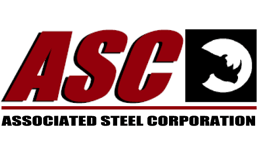Part One of Two
Steel grades in the U.S. are generally referred to by the materials standards and grading systems presented by various entities. The most common being: SAE (Society of Automotive Engineers), ASTM (American Society of Testing Materials), AISI (American Institute of Iron and Steel), and ASME (American Society of Mechanical Engineers). Those are certainly not all of them. Add to those an entire host of international agencies and it becomes a very large index. Grading systems are often common within a particular industry. Automotive may primarily use one numbering system, while pressure vessel operations would typically use another. As your time in a particular job builds up, it will serve you well to become familiar with the “esoteric” agencies and specifications typically used in that job. Be cautious, however, that your familiarity does not lead to assuming that grading systems used by your suppliers are the same because you recognize similar numbering. Be certain that the agency matches the specification referenced. Then pay special attention to any prefix, suffix, or reference to nomenclature, such as, “Modified”. The presence of that word does not have any specific connotation or purpose, other than to alert you to the fact that something relative to the specification is noteworthy. Nor does it mean that the original specification is no longer valid. While it may well mean an improved grade for one application, it may not affect your application at all.
The scope of potential modifications is broad. For instance, the content brackets for a certain element that the grade allows may have been tightened (restricted) for a particular heat-lot (melt) of steel, the bulk of which may have been destined for a particular industry. Let’s say the standard grade allows a carbon content of .38 to .42. If the melt content simply happens to fall within that grade, no modifier will be shown. However, if the ladle metallurgist has intentionally restricted the low-end content to be no less than .40, or a new restricted range of .40 to .42, the words “modified analysis” should be shown. For your needs, there may be no concern, since the content still falls within the range for the original grade. But, for the customer whose parts must hit a minimum hardness, it is very important that the carbon content is higher. For that privilege, that end-user will have paid an up-charge. Modifications may be made to element content to facilitate temperature resistance in service, strength, cleanliness, etc.
Prefix and suffix indications are more specific. An “E” prefix may mean Electric Furnace, which is a specific type of furnace treatment. An “H” suffix (H-band) relates to a chemistry adjusted to insure specific hardening results. An “H” modifier does not change the grade of the steel, it does change the hardenability potential. There may be “S” for sulfur additions, “L” for lead additions in steel, or low-carbon for stainless.
If you are not charged with the actual engineering and safety of the job, but are in an affiliated support position, you are not required to understand all of the specifics that relate to the metallurgy involved and the certification of the grade of steel. The thing to understand is that steel grades commonly bantered about in the industrial marketplace are a means of dialog. But, by the time the pen hits the paper on a requisition or purchase order, it is important that all parties are on the same page. Your general familiarity with numbering and grading systems will help you to effectively accomplish your tasks from a non-engineering position. The action you take will differ with each situation. It may be as simple as pointing out that a modifier appears. Expect a response like; “Thanks for the heads-up dimwit,” whether they were aware of it or not. Be forensically functional in whatever you do. Pay attention wherever you see the word “modified”, whether on your lunch order or marriage license.
-Howard Thomas, February 7th, 2022
